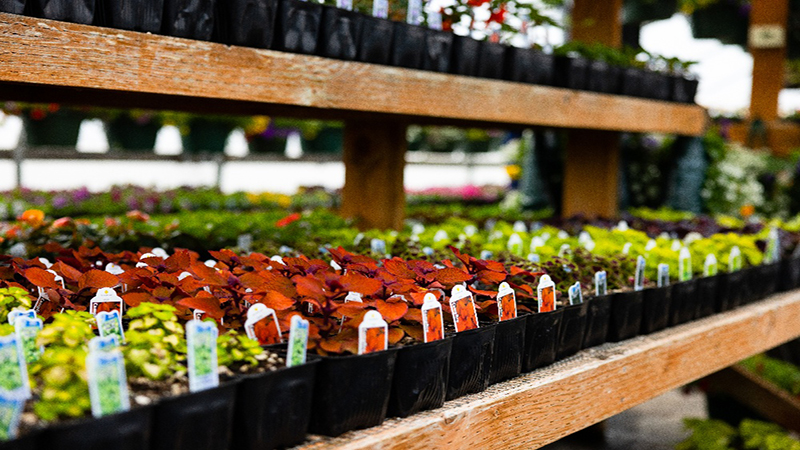12 Questions To Test If Your Store Is New-Customer Friendly

Solution-oriented sign at Weston Nurseries. Photo by Ian Baldwin.
In most of the U.S. and Europe, garden retail makes money for three months, breaks even for three and loses it for six! So it’s understandable that retailers want to expose their customers to as many products as possible. They even have a phrase for it; “Peak the Peaks!”
Add to that pressure, the constant supply of new or re-packaged products (don’t even get me started on the yearly deluge of new plant varieties), and the businesses are bursting at the seams. Aisles become narrow canyons deterring shoppers while inventory obscures signs meant to help. Everything is so jammed in, nothing stands out.
Time Crunched
Now see it like today’s customer. There are now fewer hobbyists who love discovery shopping and more time-crunched project shoppers. You can see them every spring, like deer in the headlights with 25 minutes (“tops”) to get what they need and get out of there. Faced with shelves of similar packets or benches of seemingly identical plants they are forced to read labels or bags (then go on-line to see if it’s true!). Sure they could wait for an equally stressed employee, who already has five others hovering around her and hasn’t had a break for 5 hours…
Customers don’t know what they don’t know, so de-mystifying 5,000 to 20,000+ SKUs in 25 minutes is not the fun experience they expected. Choice can kill impulse and current garden retailing is SKU-ing customers to death — or at least into under-spending!
The retailer must become the first “filter” of what shoppers need to complete their project. That is the real goal of a retail buyer; providing the sales team with a range of products already narrowed down for quick, easy-to-follow sales or merchandising. Are your buyers focused on that?
I know it is too late to thin out the shelves or cancel orders for this spring (maybe that’s a summer project before the 2017 buying season!) but use these questions to walk around each department. Consider your inventory through the eyes of today’s intrigued but hesitant consumer:
1. Is pricing readily understood by all (or do customers have to ask someone)?
2. Are customers led from impulse to wow to inspiration (or do they just wander around)?
3. Is layout conducive to grab-and-go shopping?
4. Are signs simple, fresh and understandable? (“4-inch perennials” anyone…?)
5. Is there a “Fun Ideas For A Weekend Project” area to give ideas?
6. Does the POP simplify shopping by narrowing down the choice to a few solutions?
7. Is sales language simple and confident, reflecting expertise and local knowledge?
8. Do displays attract, inform and inspire in just a few seconds?
9. Does merchandising say, “look no further, this is what you need”?
10. Are projects, such as planting an herb garden, sold as a one-stop kit of plants and hard goods?
11. Is there a full-size mannequin, mature display bed or photo-banner to show the project’s end result?
12. Overall, do the products and displays simplify customers’ options or just create more questions?
Let me know how it goes and stay tuned for next week’s blog post on making the emotional connection.
Reprinted from consultant Ian Baldwin’s website, with permission from Baldwin.








